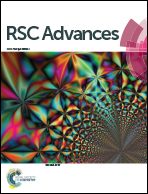Electro-deposition for asphaltene removal during heavy oil upgrading
Abstract
Blending crude oil with short-chain paraffins is a common method to improve the oil quality during heavy oil upgrading. The additional paraffins will cause precipitation of asphaltene that is removed by filtration or sedimentation; both processes are slow and inefficient. As a potential faster and more efficient removal method, an electric field can be applied in order to electro-deposit the asphaltene on the electrodes. Electro-deposition (E-D) experiments were conducted in a bench scale vessel while varying several process parameters such as the dilution ratio of paraffin to heavy oil, the paraffin used as the diluent, electric field strength, and the effect of resins on the E-D process. Increasing the dilution ratio resulted in more precipitated asphaltene and required a lower electric field strength for the E-D process. The electro-deposition process could affect the net charge of the asphaltene, and hence, both cathode and anode were closely observed: deposition onto the cathode was favored with higher dilution ratio and a lower electric field strength, while anode deposition occurred using a lower dilution ratio and higher electric field strength. This result is related to the higher resin content at low dilution ratio which adsorbs onto the asphaltene aggregate and shields or inhibits the effect of the electric field. To recover 1 kg of asphaltene, the energy input is estimated to be as low as 10 kJ. The process is relatively fast and requires low energy input, which can overcome the disadvantages of current filtration methods.



 Please wait while we load your content...
Please wait while we load your content...